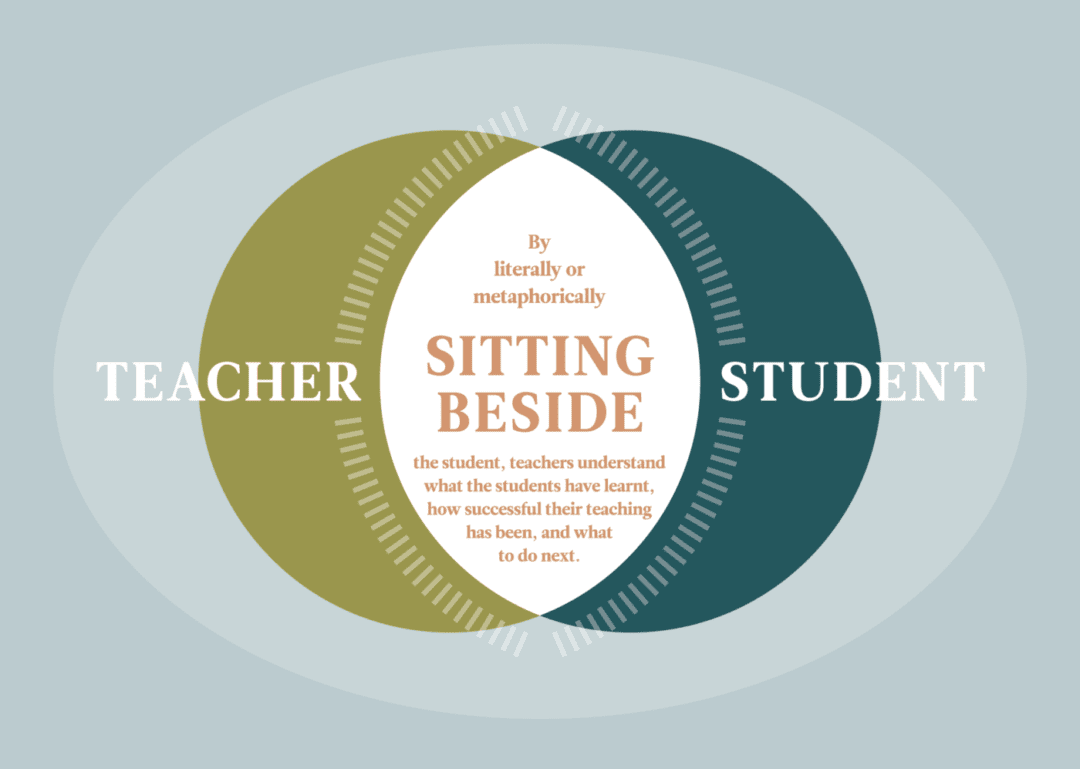Enabling students’ learning independence through assessment for learning

Assessment for learningKnown as AfL for short, and also known as formative assessme (AfLAssessment for Learning (also known as formative assessment)) strategies, closely associated with formative assessment, aim to enable students to independently assess their own learning, moving towards increasing autonomy as learners (Swaffield, 2011), and can be extremely powerful. However, as educational researcher Sue Swaffield, a former teacher, points out, they can also be confused, and the true potential of AfL frustrated. Strategies that have the potential to enable student independence serve instead to embed a passive dependence that might well fulfil teachers’ desire to ‘keep on track’, but does not serve learners well (Swaffield, 2009). Her analysis of assessment, and her faith in the potential of AfL strategies for learners, triggered a practice change for me.
Swaffield (2009) explains that the term ‘assessment’ is derived from the Latin verb ‘assidere’ meaning ‘to sit beside’. The concept of ‘sitting beside’ the learner, sharing ideas and supporting their learning conjures up a very different image from that of the teacher ‘standing behind’, watching over their shoulder, as in testing; or ‘standing in front’ transmitting knowledge. AfL should ideally fulfil the original concept of assessment:
‘By sitting besides, literally or metaphorically, teachers gather the evidence which they interpret to provide information about what the students have learnt, how successful their teaching has been, and what to do next. They also, and more importantly, enable and encourage students themselves to develop an understanding of what and how they are learning, to recognise and value achievement, and to take responsibility for directing and regulating their own learning. In so doing, the traditional roles of teachers and pupils, and relationships between them are transformed, and in turn the culture of the classroom undergoes fundamental change’ (p.2).
Following this definition, assessment should not only improve learning, but also increase learners’ independence and agency. Rather than just improving test results, this promises a change in classroom culture in which ownership and control of learning shifts from teachers towards students (Swaffield, 2009).
I had found that, far from priming students for independence, the use of AfL tools such as learning objectives and success criteria often pacified students further, strengthening the role of the teacher over the student. The formation of success criteria, for example, was reduced to ‘steps to success’ for the students, who remained far from active in the process. The concept of ‘sharing’ learning intentions had transformed into simply ‘telling’. Where was the agency and independence here?
The use of learning intentions, success criteria and teacher-, peer- and self-assessment were ticked off during observations as good use of AfL, but were often only enactments of their use. Yes, AfL tools were being used, but not in a way that leads students towards self-regulation. With Swaffield’s concept of ‘sitting beside’ in mind, I made the following practice changes, which proved to be highly effective:
Sharing images of quality through student dialogue A typical lesson begins with students sitting in small groups, discussing examples of the quality outcome expected for the lesson. Depending on the subject, this might be a selection of written text examples, new maths calculations, examples of problem solving, even artwork and drawings. These are images of quality for the students to deconstruct and examine together. Importantly, these are high-quality outcomes, but ‘within reach’ of the students, rather than pitched beyond their reach. Then I pose a question, for example: ‘What’s happening?’ or ‘Which is the best piece and why?’ ‘How did this student do this?’ While the students debate and discuss, I move around and assess by listening. Students quickly begin to explain what’s happening to those with less knowledge, providing powerful moments of learning between students. We then decide what the learning intention for the lesson might be – we frame this as a question: ‘Can I write a diary entry?’ or ‘Can I add three-digit numbers in columns?’
Formulating success criteria the dialogue over these images of quality then gives the students the opportunity to write their own success criteria for the lesson outcomes in their own language. Visit the online edition of this article to see an example written by a student after sharing some initial examples of rounding.
Composing success criteria can be done in groups or individually and sometimes as a whole class through discussion and debate. Importantly, they are learning to regulate their own learning; allowing students to formulate these themselves means they are forced to have an interest in quality. This is very different to being given success criteria that the teacher has decided on beforehand.
Modelling and demonstration I will also model some of the processes involved to the whole class or groups where students might add to or alter their shared or individual success criteria.
Peer- and self-assessment During and before the end of the lesson, students assess each other using their success criteria and stick Post-it notes on each other’s learning, indicating possible areas of improvement. Then they spend some time in self-assessment mode, checking and adjusting anything they now think they need to.
In this way, I have tried to move towards a more authentic use of AfL tools in the classroom and, as best I can, ‘sit beside’ my students rather than in front or behind. Students know to look for quality and to extrapolate key points in its formulation to guide their own learning, thus AfL is activating, rather than pacifying student autonomy.
References
Swaffield S (2011) Getting to the heart of authentic assessment for learning. Assessment in Education: Principles, Policy & Practice 18(4): 433-449.
Swaffield S (2009) The misrepresentation of assessment for learning – and the woeful waste of a wonderful opportunity. Available at: www.aaia.org.uk/content/uploads/2010/07/The-Misrepresentation-of-Assessment-for-Learning.pdf (accessed 22 August 2017).











